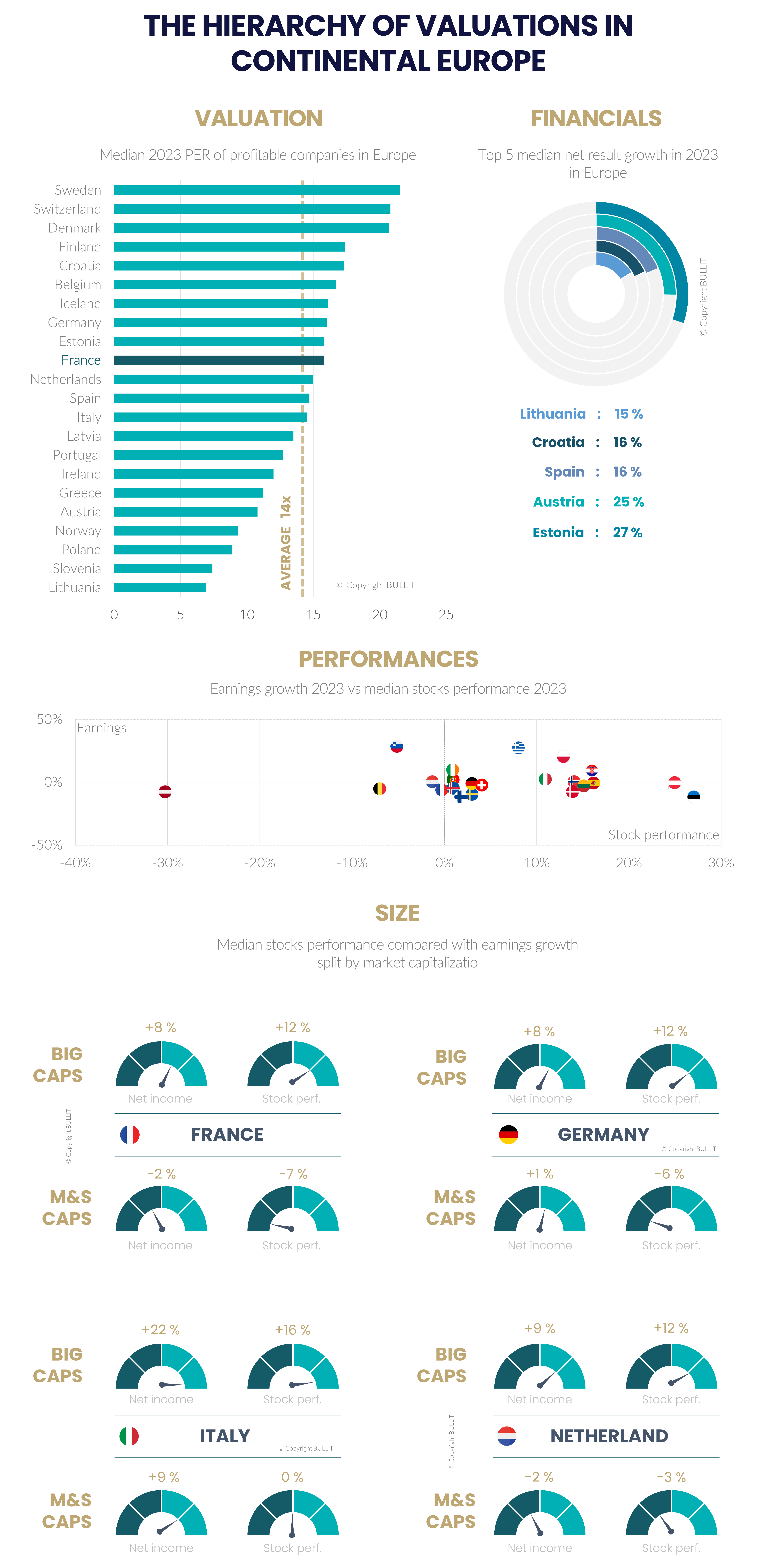 BACK
BACK

07/03/2024
THE HIERARCHY OF VALUATIONS IN CONTINENTAL EUROPE.
The valuations of the various European stock markets are far from uniform. Some markets have structurally higher median PERs (price earning ratios) than others, sometimes due to sector allocation. But counter-intuitively, the most expensive countries are not generally those with the highest earnings growth.
Using our algorithms, we constantly collect stock market and fundamental data on nearly 5,000 European companies, enabling us to establish the hierarchy of valuations on the Old Continent. The price-to-earnings ratio, based on the average annual number of outstanding shares and VWAP, stands at just over 14x in 2023 in Europe for profitable companies (9x including loss-making companies). Structurally, listed companies in the Nordic countries have the highest valuations, at around 20x net profit. This is except for Norway, where the large share of fossil energies and the banking sector in the stock market pushes down median valuations. The median P/E there is less than 10x. It is also interesting to note that in Switzerland, all sectors trade on higher valuation multiples than elsewhere.
More generally, economically mature countries are trading at valuations that are 30% higher than those in Eastern Europe, sometimes by as much as a factor of three. This is despite the fact that earnings growth is lower in these countries. Access to information, the language barrier and the small number of local investors partly explain the apparent attractiveness of multiples in the CEE. From an economic point of view, the proximity of the Baltics to Russia in a tense geopolitical context has not helped to reverse the hierarchy. On the contrary, multiples there have fallen by almost 10% compared with 2022.
SMALL CAPS STRUGGLE AS GROWTH IN EARNINGS COMES TO A HALT
There are also major differences between the behaviour of small/mid caps and large caps. In the vast majority of mature countries, blue chips performed well on the stock market in 2023, with a significant increase in earnings. Conversely, small and mid caps declined in almost all geographies, in the absence of an increase in their net asset value. This phenomenon highlights the ability of large international groups to seek growth outside Europe, while smaller companies are more dependent on the strength of local economies and have generally weaker pricing power in an inflationary environment.
This phenomenon is particularly visible in the main European markets of France, Germany and the Netherlands. The gap in stock market performance between companies with a capitalization of over €10 billion and the others is almost 20%, with a median increase of +12% on the one hand and a median fall in share prices of -5% on the other. These performances are in line with a median growth in net earnings of 8% for bigcaps, compared with a decline of around -1% in median earnings for small and midcaps.
#valuations #europe #per #eps #small #midcaps #bigcaps
____






